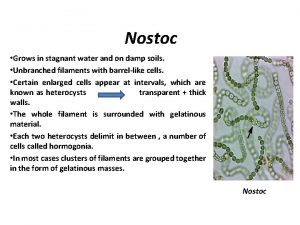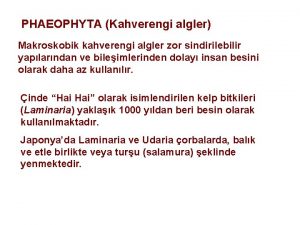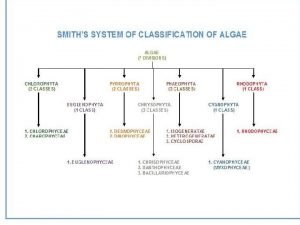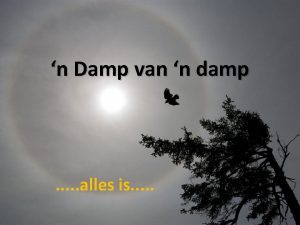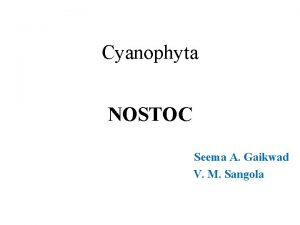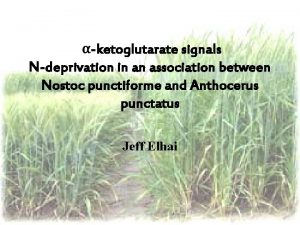Nostoc Grows in stagnant water and on damp





- Slides: 5

Nostoc • Grows in stagnant water and on damp soils. • Unbranched filaments with barrel-like cells. • Certain enlarged cells appear at intervals, which are known as heterocysts transparent + thick walls. • The whole filament is surrounded with gelatinous material. • Each two heterocysts delimit in between , a number of cells called hormogonia. • In most cases clusters of filaments are grouped together in the form of gelatinous masses. Nostoc

Reproduction 1. Vegetative reproduction. 2. Asexual reproduction. A) By fission. B) By Akinetes. Sexual reproduction is not known.

1. Vegetative reproduction. By fragmentation Filament Each breaks into fragments. gives rise to a new filament. Usually fragmentation occurs at the heterocysts This fragment is capable of creeping movements in the gelatinous sheath until it escapes and grows into a new filament.

2. Asexual reproduction. • A) By fission. A constriction is formed in the middle of the cell extends from the surface inwards towards the center Division into two cells leads to the increase in number of cells per filament without production of a new one.

2. Asexual reproduction. • B) By Akinetes. This takes place by means of resting , thick-walled spores known as akinetes How ? Normal vegetative cells enlarge in size become rich in food materials and form a thick wall These akinetes are yellow or brown in colour and they are very resistant to un-favourable conditions When the conditions are favourable the akinetes germinate into new filaments.
